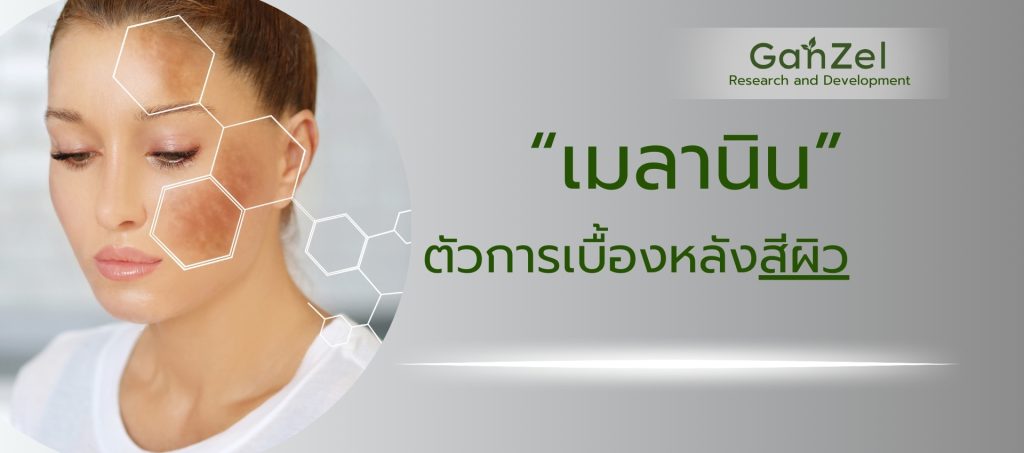Academic Articles
Melanin: The Cause Behind Skin Color
Melanin: The Cause Behind Skin Color
Melanin is a complex polymer responsible for creating the color of skin, hair, and eyes in humans and many other living organisms. This article will explore the mechanism of melanin production, address common misconceptions, discuss its benefits, and provide evidence-based recommendations for cosmeceutical products to control melanin.
Mechanism of Melanin Production
Melanin is produced through a process called melanogenesis, which occurs in specialized cells called melanocytes. The key steps in this process include:
- Tyrosine Oxidation: The amino acid tyrosine is oxidized to dopaquinone by the enzyme tyrosinase [1].
- Dopaquinone Conversion: Dopaquinone is then converted into either eumelanin (brown/black pigments) or pheomelanin (red/yellow pigments) through a series of chemical reactions [2].
- Melanosome Formation: Melanin is packaged into organelles called melanosomes, which are then transferred to surrounding keratinocytes [3].
- Distribution: The melanosomes spread throughout the keratinocytes, resulting in skin pigmentation [4].
Common Misconceptions
- Myth: Only dark-skinned individuals have melanin. Reality: All humans, regardless of skin color, produce melanin. The variation in skin color is due to differences in the amount and type of melanin produced [5].
- Myth: Melanin provides complete protection against UV radiation. Reality: While melanin offers significant protection, it does not provide complete immunity to UV damage. Sun protection measures are still necessary for all skin types [6].
- Myth: Tanning is always healthy. Reality: Tanning is a response to DNA damage caused by UV radiation. While it provides some protection, it is also a sign of skin damage [7].
Benefits of Melanin
- UV Protection: Melanin absorbs UV radiation, reducing DNA damage and the risk of skin cancer [6].
- Antioxidant Properties: Melanin acts as an antioxidant, neutralizing harmful free radicals [8].
- Thermoregulation: Darker skin may help regulate body temperature more efficiently in hot climates [9].
- Vitamin D Regulation: Melanin helps regulate vitamin D production in the skin, preventing overproduction in sunny environments [10].
Evidence-Based Cosmeceutical Recommendations
- Tyrosinase Inhibitors: Ingredients such as kojic acid, arbutin, and vitamin C can help regulate melanin production by inhibiting tyrosinase activity [11].
- Niacinamide: This form of vitamin B3 has been shown to reduce melanin transfer to keratinocytes, leading to more even skin tone [12].
- Retinoids: Topical retinoids can help distribute melanin more evenly and increase cell turnover, improving overall skin appearance [13].
- Antioxidants: Ingredients like green tea extract and resveratrol can help protect against UV-induced melanin production [14].
- Sunscreens: Regular use of broad-spectrum sunscreens is crucial for preventing UV-induced melanin production and maintaining even skin tone [15].
It’s important to note that while these cosmeceuticals can help regulate melanin production, their effectiveness may vary depending on individual skin types and conditions. Consultation with a dermatologist is recommended for personalized skincare advice.
Conclusion
Melanin plays a crucial role in skin pigmentation and offers numerous benefits beyond aesthetics. Understanding its production mechanism and the factors influencing it can lead to more effective and science-based approaches to skincare. As research in this field continues to evolve, new insights may emerge, potentially leading to more advanced and targeted treatments for pigmentation-related concerns.
References
[1] Hearing, V. J. (2011). Determination of melanin synthetic pathways. Journal of Investigative Dermatology, 131(E1), E8-E11.[2] D’Mello, S. A., Finlay, G. J., Baguley, B. C., & Askarian-Amiri, M. E. (2016). Signaling pathways in melanogenesis. International journal of molecular sciences, 17(7), 1144.
[3] Yamaguchi, Y., & Hearing, V. J. (2009). Physiological factors that regulate skin pigmentation. Biofactors, 35(2), 193-199.
[4] Lin, J. Y., & Fisher, D. E. (2007). Melanocyte biology and skin pigmentation. Nature, 445(7130), 843-850.
[5] Sturm, R. A., Box, N. F., & Ramsay, M. (2001). Human pigmentation genetics: the difference is only skin deep. Bioessays, 23(12), 1148-1158.
[6] Brenner, M., & Hearing, V. J. (2008). The protective role of melanin against UV damage in human skin. Photochemistry and photobiology, 84(3), 539-549.
[7] Gilchrest, B. A., Eller, M. S., Geller, A. C., & Yaar, M. (1999). The pathogenesis of melanoma induced by ultraviolet radiation. New England Journal of Medicine, 340(17), 1341-1348.
[8] Bustamante, J., Bredeston, L., Malanga, G., & Mordoh, J. (2004). Role of melanin as a scavenger of active oxygen species. Pigment Cell Research, 17(3), 294-303.
[9] Jablonski, N. G., & Chaplin, G. (2000). The evolution of human skin coloration. Journal of human evolution, 39(1), 57-106.
[10] Holick, M. F. (2016). Biological effects of sunlight, ultraviolet radiation, visible light, infrared radiation and vitamin D for health. Anticancer research, 36(3), 1345-1356.
[11] Couteau, C., & Coiffard, L. (2016). Overview of skin whitening agents: Drugs and cosmetic products. Cosmetics, 3(3), 27.
[12] Hakozaki, T., Minwalla, L., Zhuang, J., Chhoa, M., Matsubara, A., Miyamoto, K., … & Boissy, R. E. (2002). The effect of niacinamide on reducing cutaneous pigmentation and suppression of melanosome transfer. British Journal of Dermatology, 147(1), 20-31.
[13] Kang, S., Krueger, G. G., Tanghetti, E. A., Lew-Kaya, D., Sefton, J., Walker, P. S., … & Weinstein, G. D. (2007). A multicenter, randomized, double-blind trial of tazarotene 0.1% cream in the treatment of photodamage. Journal of the American Academy of Dermatology, 56(5), 769-776.
[14] Nichols, J. A., & Katiyar, S. K. (2010). Skin photoprotection by natural polyphenols: anti-inflammatory, antioxidant and DNA repair mechanisms. Archives of dermatological research, 302(2), 71-83.
[15] Lim, H. W., Arellano-Mendoza, M. I., & Stengel, F. (2017). Current challenges in photoprotection.

